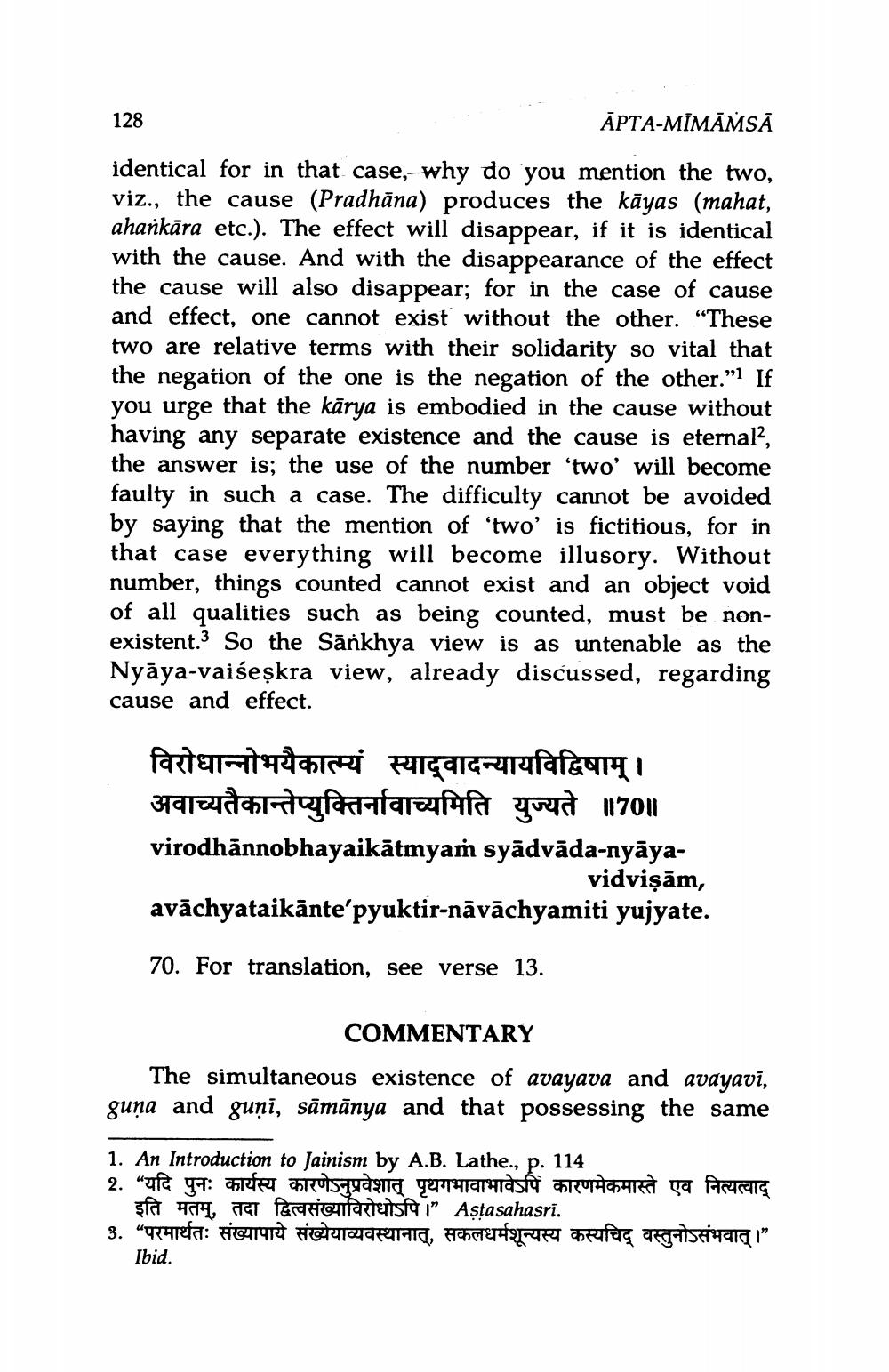________________
128
APTA-MĪMĀNSĀ
identical for in that case, why do you mention the two, viz., the cause (Pradhāna) produces the kāyas (mahat, aharkāra etc.). The effect will disappear, if it is identical with the cause. And with the disappearance of the effect the cause will also disappear; for in the case of cause and effect, one cannot exist without the other. “These two are relative terms with their solidarity so vital that the negation of the one is the negation of the other.”] If you urge that the kārya is embodied in the cause without having any separate existence and the cause is eternal, the answer is; the use of the number 'two' will become faulty in such a case. The difficulty cannot be avoided by saying that the mention of two' is fictitious, for in that case everything will become illusory. Without number, things counted cannot exist and an object void of all qualities such as being counted, must be nonexistent. So the Sānkhya view is as untenable as the Nyāya-vaiseșkra view, already discussed, regarding cause and effect
विरोधान्नोभयैकात्म्यं स्याद्वादन्यायविद्विषाम्। 3791cudan tayfadatareyfifa geed 117011 virodhānnobhayaikātmyam syādvāda-nyāya
vidviņām, avāchyataikānte'pyuktir-nāvāchyamiti yujyate.
70. For translation, see verse 13.
COMMENTARY The simultaneous existence of avayava and avayavi, guna and guņi, sāmānya and that possessing the same
1. An Introduction to Jainism by A.B. Lathe., p. 114 2. “यदि पुनः कार्यस्य कारणेऽनुप्रवेशात् पृथगभावाभावेऽपि कारणमेकमास्ते एव नित्यत्वाद्
sa 6M, GT Parationstestai" Astasahasri. 3. “परमार्थतः संख्यापाये संख्येयाव्यवस्थानात्, सकलधर्मशून्यस्य कस्यचिद् वस्तुनोऽसंभवात्।"
Ibid.




